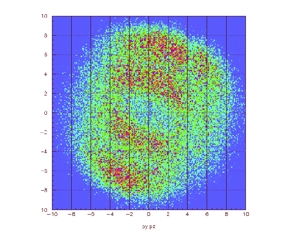
Figure 1: Momentum image of Ne2+ recoil ion obtained in circularly polarized
laser pulses of 8 fs duration and 1 x 1016 w/cm2 peak intensity.
Time correlation in the sequential release of two electrons from Ar and Ne by circularly-polarized few-cycle laser pulses
A. S. Alnaser, C. M. Maharjan, X.-M. Tong, B. Ulrich, P. Ranitovic,
S. Ghimire, B. Shan, Z. Chang, C. D. Lin, I. V. Litvinyuk, C. L. Cocke
Kansas State University, Manhattan, Kansas 66503
Being ubiquitous in strong-field laser-matter interactions, processes such as double and multiple ionization of atoms have been the focus of many experimental and theoretical investigations. These investigations have been devoted to understanding the different mechanisms responsible for these processes and how to use that in order to gain better insight into the atomic structure and diverse many-particle dynamics that may lead to the removal of electrons from their parent atoms. For example, when linearly-polarized and relatively low-intensity laser pulses are used, it has been recently shown that double and multiple ionization may most likely proceed through rescattering (recollision) process[1,2,3]. However, studies that explore dynamics of double and multiple ionization in few-cycle, high-intensity, circularly-polarized laser pulses are still scarce.
In circularly polarized pulse, the drift momentum that an electron (ion) gains when released is directly proportional to the value of the laser peak field at the time of ionization. In this work we have used few-cycle (~ 8fs), circularly polarized laser pulses to study the double ionization of Ar and Ne atoms at relatively high laser intensities (peak intensity ~ atomic unit). We have measured with high-resolution the full vector momenta of the doubly-charged Ar2+ and Ne2+ recoil ions produced in these interaction using the COLTRIMS technique. We found that the momentum spectra of the two ions exhibit clear distinctive distributions that reflect the structural properties of the two neutral atomic targets. Additionally, we demonstrate that the momentum spectrum of the doubly-charged ion can be used to extract sub-cycle time information regarding the sequential release of the two electrons. By measuring the momentum of the doubly-charged ion, the net vector momentum of the two released electrons is obtained, which in turn, is used to deduce the release times of the two electrons. Fig. 1 shows the momentum image of Ne2+ ions produced in 8 fs, 1x 1016 w/cm2 laser pulses in the polarization plane.
A comparison of the measured spectra with those predicted by a theoretical model for single and double-ionization will be presented.

References:
1) A. S. Alnaser, et. al., PRL 93, 113003 (2004).
2) A. Rudenko, et. al, PRL 93, 253001 (2004).
3) M. Weckenbrock, et. al., PRL 92, 213002 (2004).
This work was supported by the
Chemical Sciences, Geosciences and Biosciences Division,
Office of Basic Energy Sciences,
Office of Science,
U.S. Department of Energy.
Submitted to ICPEAC, July 2005 in Rosario, Argentina.
This abstract is also available in Adobe Acrobat format.
| Return to do another abstract search of all our holdings. |
|
|